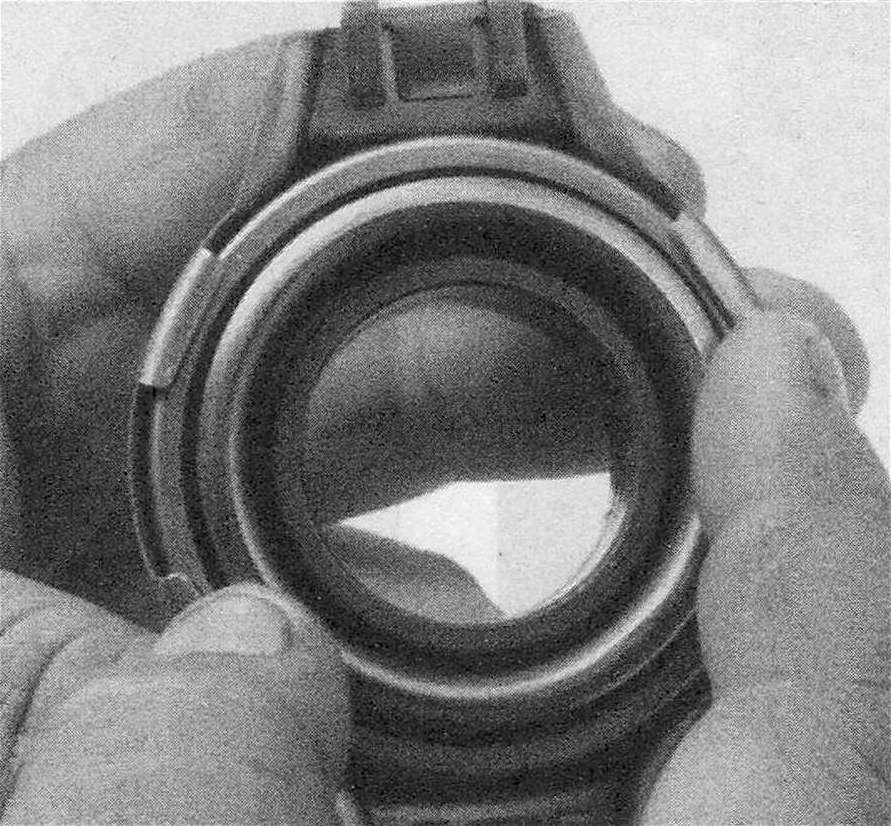Clutch release bearing – removal, inspection and installation
Warning: Dust produced by clutch wear is hazardous to your health. DO NOT blow it out with compressed air and DO NOT inhale it. DO NOT use gasoline or petroleum-based solvents to remove the dust. Brake system cleaner should be used to flush the dust into a drain pan. After the clutch components are wiped clean with a rag, dispose of the contaminated rags and cleaner in a covered, marked container.
Removal
1. Raise the vehicle and support it securely on jackstands.
2. Remove the transmission (see Manual transmission).
3. Detach the clutch release lever from the ballstud and remove the bearing and lever from the input shaft.
Inspection
4. Wipe off the bearing with a clean rag and inspect it for damage, wear and cracks. Don’t immerse the bearing in solvent – it’s sealed for life and immersion in solvent will ruin it.
5. Hold the center of the bearing and rotate the outer portion while applying pressure (see illustration). If the bearing doesn’t turn smoothly or if it’s noisy or rough, replace it. Note: Considering the difficulty involved with replacing the release bearing, we recommend replacing the release bearing whenever the clutch components are replaced.
5.5 To check the clutch release bearing, hold the hub (the center) of the bearing and rotate the outer portion while applying pressure; if the bearing doesn’t turn smoothly or if it’s noisy or rough, replace it
Installation
6. Lightly lubricate the friction surfaces of the release bearing, ballstud and the input shaft with high-temperature grease.
7. Install the release lever and bearing onto the input shaft.
8. The remainder of installation is the reverse of removal.
